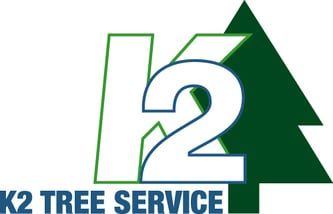How To Trim Hedges
How To Guide To Trimming Your Hedges Properly

Spindly, scraggly, overgrown, imbalanced, neglected, and out of control. That’s how many of us would describe our hedges. While we may remember to water and weed our gardens and flower beds, our hedges also require TLC now and again to keep them looking their best.
While you may be avoiding trimming your hedges, fearing you will do more harm than good, or you forget to book a service, if you know the basics, you can groom your hedges confidently.
The guide will provide the tips and tools you need to keep your hedges and bushes dense, healthy, and attractive.
Quick Facts
Suitable for: All hedges
Best Time To Prune: Spring and Summer (with exceptions)
Difficulty:
Fairly Simple
Best Time To Prune Hedges
New hedges need formative trimming in the winter or early spring for the first couple of years after planting.
After that, your hedges require maintenance trimming once a year for informal and twice a year for formal hedges that you want to look uniform and seamless. Some formal hedges may even require trimming three times a year, depending on the species and speed of growth.
Generally, the best time to do maintenance hedge pruning is between spring and summer. However, you may need to delay your pruning if birds nest in your hedges to give them time to raise their young.
Talk to us to learn the best pruning times for your particular hedge.
How To Trim Your Hedge: Trimming Techniques

Hand-held pruning shears work well for smaller plants and for pruning inside branches to promote sunlight penetration and airflow. For larger hedges using hand-held shears in conjunction with an electric or fuel-powered hedge trimmer will make your life easier and speed up the process.
PRO TIP:
Before you begin, make sure your pruning equipment is sharp and well-lubricated to ensure clean cuts that won’t damage your plants.
HEDGE TRIMMING SAFETY TIPS
Wear gloves and closed-toed shoes while pruning your hedges. Wear safety goggles and sturdy work gloves when using a power pruning tool.
Remove any obstacles from the area. Do not operate power trimmers above shoulder height; use stable and sturdy platforms or step ladders. Do not use electric hedge trimmers in damp conditions. To avoid accidentally cutting the cable or tripping, carry the cord over your shoulder while pruning.
Formal Vs. Informal Hedges: What’s The Difference
A formal hedge is a row of identical plants, closely clipped and uniformly pruned so they look like a single plant.
An
informal hedge is a line of shrubs that are allowed to grow more naturally and have a less uniform structure.
Formal Hedge Maintenance Trimming
Even the most vigorous hedge does not need to exceed 2 feet in width. Formal hedges should be slightly tapered on each side so that the base is wider than the top to allow light to reach the bottom (aka. cutting a hedge to a batter).
Formal Hedge Trimming Tips To Ensure A Symmetrical Shape
1. To cut straight edges, use a taut horizontal string tied between two canes or stakes to act as a guide to cut the top of the hedge level. Push stakes into the ground to trim the sides vertically.
2. When shaping the top of the hedge, create a template of the arch or shape you want out of cardboard or plywood. Cut the top of your hedge using the guide while sliding it along as you prune.
3. Keep the blades of the shears parallel to the line of the hedge as you prune to ensure clean, straight lines.
4. Using a powered hedge trimmer, keep the blade parallel to the hedge and cut using a broad, sweeping action, working from the bottom upwards so that the cut foliage falls away.
5. As you trim the sides of your hedge, reach inside the bush every few feet and cut one or two branches with hand shears at a 45-degree angle just above a nub or leaflet growing in a direction you want to encourage.
Interior pruning improves airflow and sunlight penetration to prevent your plant from looking lush and green on the edges and dead inside.
6. Trim the topmost branch, or “lead shoot,” to the desired height.
Pruning An Older, Severely Overgrown Hedge
If your hedge is old and severely overgrown, apply the three-year rule to provide rejuvenation pruning. Cut up to one-third of the thickest stems down to the plant’s base to stimulate new growth. Do this the following year and the year after. The result will be a smaller, healthier shrub.
Pruning An Informal Hedge
When pruning an informal hedge, remove misplaced shoots, and cut it back to your preferred size. Use loppers or secateurs to prune to avoid damaging the leaves, especially if your shrubs are evergreen.
Final Words On Hedge Trimming
The tips in this article are general guidelines that will help you keep your bushes and hedges healthy, well-groomed, and grow into the shape you want.
Before you take the shears to your hedges or shrubs, talk to a tree care specialist or another expert to find out how to best maintain your particular plants. Depending on the age and species,
your hedges may require more or less frequent pruning.
For example, evergreens require pruning in early spring. They grow slowly, which can cause them to look bare if pruned later in the season.
Flowering shrubs should not be pruned until after the blooms have turned brown.
Tips To Choosing The Right Plants For Your Hedge
When choosing plants for your hedge, figure out how high and wide you want your hedge before you plant. Choose varieties with well-suited growth habits for the type of hedge you want and won't overgrow your space. Doing so will save you the frustration of keeping it under control or not achieving the look or level of privacy you desire.
If you want a more naturally shaped evergreen hedge that requires
minimal pruning or maintenance, choose western arborvitae, eastern red cedar, juniper, cypress, hemlock, fastigiate white pine, and some varieties of holly.
Other informal hedge options worth considering if year-round foliage is not essential are flowering shrubs, such as forsythia, lilac, hydrangea, rose of sharon, crape myrtle, or rugosa roses.
If you want to create a
natural privacy barrier, choose tall trees and a mix of coniferous and deciduous species.
Sound Tree Care LLC is a tree care company serving SeaTac and the Seattle, Washington area. We have an arborist on staff and are happy to provide you with tips and recommendations on what plants will achieve the goals you have for your hedge and how to maintain them.
If you have any questions about your hedges, shrubs, or trees, we are happy to answer them. Talk to us today.












